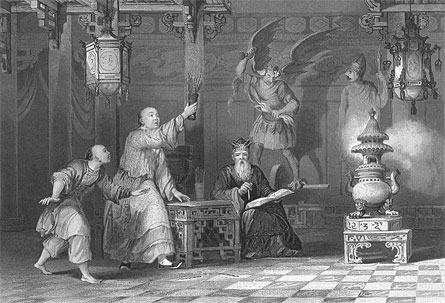A Devotee consulting the Sticks of Fate 1843
The significance of Kau Cim in Chinese society
The significance of Kau Cim in Chinese society is highlighted in historical texts and artworks. The engraving from 1843 by T. Allom, etched by Auguste Fox, captures a scene of this ancient practice. Taken from a series of engravings that showcase the landscapes, architecture, and social habits of China, this artwork by Reverend G. N. Wright offers a glimpse into the historical context in which Kau Cim was practiced.
Kau Cim is also known as Chinese divination wands
Kau Cim, also known as Chinese divination wands, is a time-honored practice rooted in the rich cultural heritage of ancient China. This divinatory method involves seeking guidance from a sacred oracle by drawing numbered bamboo sticks, each corresponding to specific answers and insights. The origins of Kau Cim can be traced back thousands of years, reflecting the profound connection between the Chinese people and their spiritual traditions.
The process of Kau Cim is both simple and profound. It begins with a sincere question posed to the oracle. The seeker then shakes a container filled with bamboo sticks until one falls out. The number on the stick corresponds to a verse or message, often found in an accompanying book, which provides the sought-after answer. This method of divination is believed to offer clarity and guidance, tapping into the wisdom of the universe and the divine.
In traditional Chinese culture, Kau Cim is not merely a fortune-telling tool but a respected spiritual practice. It is commonly performed in temples, where seekers kneel before statues of deities, light incense, and make offerings before engaging in the ritual. The serene and solemn atmosphere of these temples enhances the spiritual experience, allowing seekers to connect deeply with the divine.
Today, Kau Cim continues to be a revered tradition, embraced by many who seek wisdom and guidance in their lives. The enduring appeal of this ancient divinatory method lies in its simplicity, accessibility, and the profound insights it offers. As we delve into the mysteries of Kau Cim, we not only explore a fascinating aspect of Chinese culture but also connect with a timeless practice that transcends the boundaries of time and space.
By exploring and understanding Kau Cim, we honor the wisdom of the past and keep alive a tradition that has guided countless individuals through the ages.

